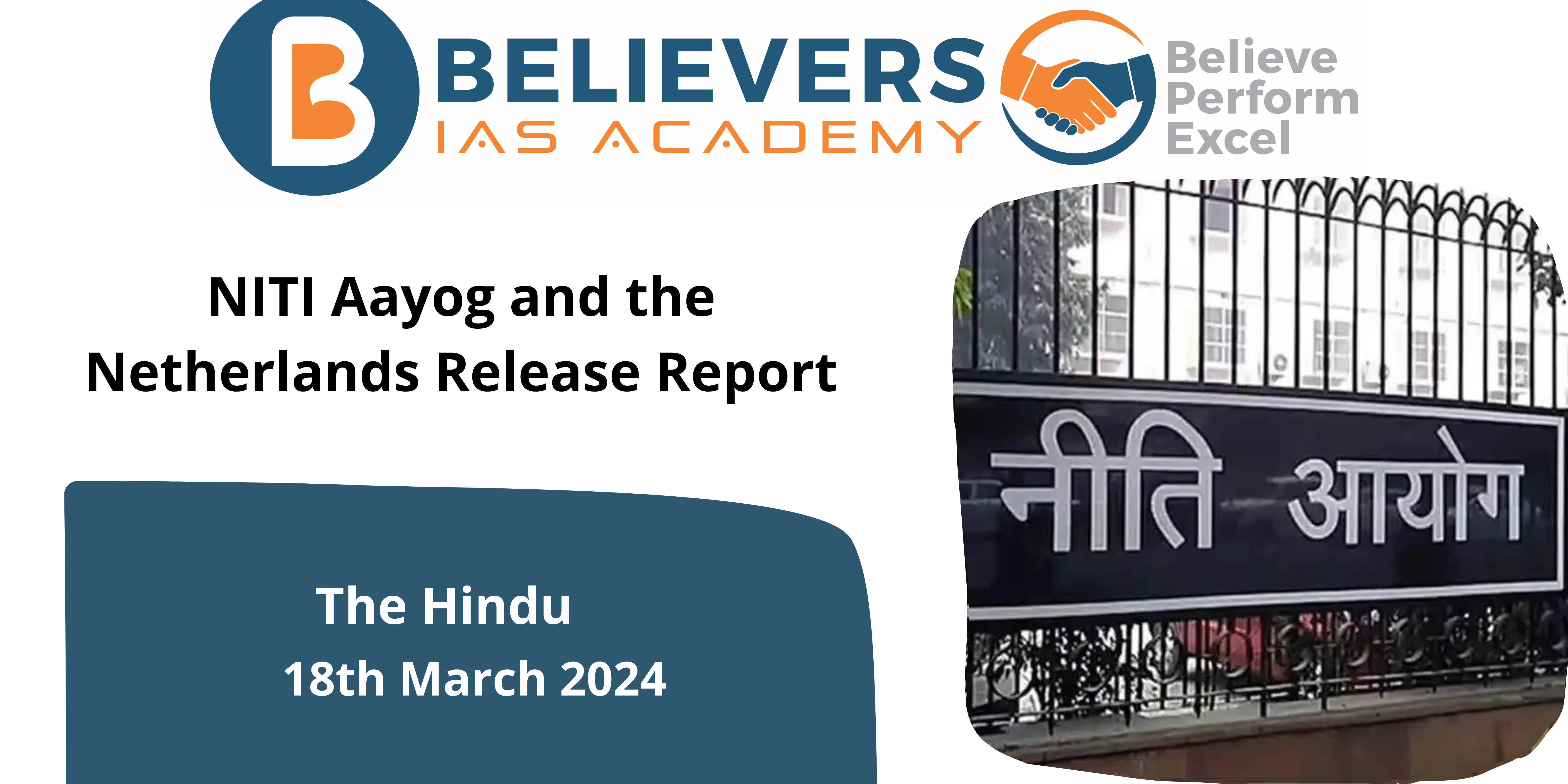NITI Aayog and the Netherlands Release Report
Context:
NITI Aayog and the Embassy of the Kingdom of the Netherlands released a report titled ‘LNG as a Transportation Fuel in Medium and Heavy Commercial Vehicle’ at India Energy Week.
Relevance:
GS-02 GS-03 (Planning, NITI Aayog)
Key Highlights of the report:
- NITI Aayog and the Embassy of the Netherlands have been actively collaborating in the field of energy transition under the Statement of Intent (SoI) partnership since 2020.
- The report was released as the first outcome of the cooperation.
- The report discusses the potential of natural gas (LNG) as a fuel source and suggests strategies for its use in commercial vehicles.
- The report further highlights the need for the development of a transparent implementation framework for these recommendations, driven by near-term goals of demand creation and market seeding.
What is liquefied natural gas?
- Liquefied natural gas (LNG) is a natural gas that has been reduced to a liquid state, through a process of cooling. As we transcend towards net zero carbon emissions and renewable energy sources, LNG is one of the ‘clean’ fossil fuel that makes the transition to a carbon-free future possible.
- Process of making: It is created by transforming natural gas into a liquid state, by cooling it to -161oC (-259F). The process reduces it to 1/600th of its original un-liquified volume and to half the weight of water.
- LNG is – Clear, Odourless and Colourless.
- It is typically 85-95% methane, which contains less carbon than other forms of fossil fuels. It also contains tiny amounts of ethane, propane, butane and nitrogen; the exact composition varying depending on its source and processing.
Advantages of using LNG:
- LNG is the cleanest burning fossil fuel, producing 40% less carbon dioxide (CO) than coal and 30% less than oil. It also doesn’t emit soot, dust, or particulates.
- LNG-fuelled vessels can reduce their EEDI(Energy Efficiency Design Index) rating by 20%, while their Carbon Intensity Indicator will be reduced by approximately the same amount.
- It does not emit soot, dust or particulates and produces insignificant amounts of sulphur dioxide, mercury and other compounds considered harmful to the earth’s atmosphere.
- GHG emissions can be reduced by up to 23% with modern engine technology.
- LNG is 10-25% cheaper than diesel making it more affordable alongside being one of the most efficient source of energy.
- LNG for the transition to net zero: LNG helps with what’s known as the ‘energy trilemma’, which refers to finding a balance between three key requirements in our energy choices: we want affordable energy; we want our energy supply to be secure; and, we want to drive down our carbon emissions to net zero.
NITI Aayog:
- January 1, 2015: The Planning Commission was replaced by a new entity called NITI Aayog.
- It prioritizes on ‘Bottom-Up’ approach in envisioning the concept of Maximum Governance, Minimum Government, echoing the principles of ‘Cooperative Federalism’.
- Composition: The Governing Council of NITI Aayog comprises the Hon’ble Prime Minister of India; Chief Ministers of all the States and Union Territories with legislature; Lt Governors of other UTs; Ex-Officio Members; Vice Chairman, NITI Aayog; Full-Time Members, NITI Aayog; and Special Invitees.
Facts for prelims:
- Important reports released by the NITI Aayog.
- India Innovation Index (III)
- SDG India Index
- School Education Quality Index (SEQI)
- Composite Water Management Index
- Major Initiatives have been taken by NITI Aayog.
- Atal Innovation Mission
- SATH Project.
- Aspirational District Programme
- District Hospital Index
- Health Index
- Agriculture Marketing And Farmer Friendly reform Index
- Women Transforming India Awards
- Good Governance Index
- Women Entrepreneurship Platform (WEP)
- Strategy for New India at 75
- ‘Methanol Economy’ programme




